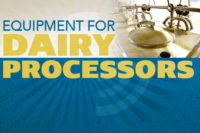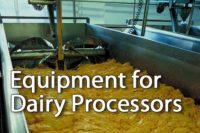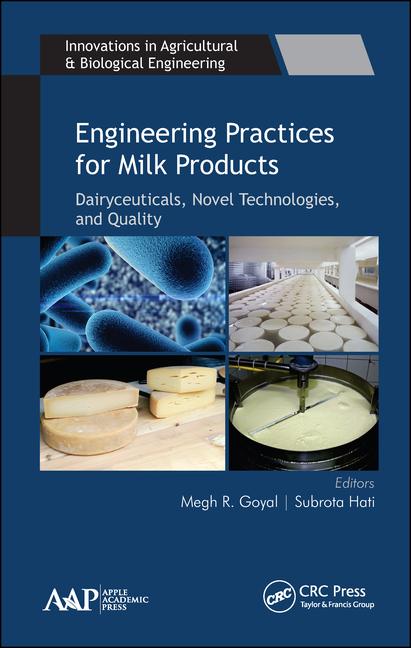Writing standards for robotic equipment
Robotic automation equipment is common in the auto industry, but the wet conditions in dairy plants have created a need for equipment standards to comply with strict food safety and hygiene rules. Here is what we have done so far.

Traditional applications for robot-based automation in food processing have been basic pick-and-place packing operations. On the processing side, dairy plants contain many applications that are repetitive or labor-intensive. These are perfect candidates for robot-based automation.
One of the many challenges is the environment. Most industrial robots are only designed for the automotive industry. Many are not suited to the high humidity and wet environment or the sanitary requirements of the food industry.
Fabrication specifications that define criteria for sanitation, cleanability and inspectability have been requested by the principal stakeholder groups in 3-A SSI, including fabricators, processors and regulatory sanitarians. 3-A SSI reached out further to the European Hygienic Equipment Design Group and the Robotics Industry Association to develop a sanitary standard for robot-based automation systems.
Collaboration on 3-A Sanitary Standard number B-103-00 (Tentative Proposal) for Robot-Based Automation Systems began at the end of 2012. Due to the nature of this work and the importance to various stakeholders, this standard is being proposed as a candidate American National Standard. This standard will cover the robot arm mechanism or manipulator (the tool that performs the work on the product), any tool changer or mounting, and any associated cabling or arm dressing.
Protecting product and equipment
The draft standard will cover protection of the product from the equipment and the equipment from the environment. Protecting the equipment from the environment is one element of the document that is bringing to light multiple hygienic factors for consideration. Robots need to be of a sealed design and protected from water entry in order to protect internal electronic components. Many robot manufacturers include a low-pressure purge to ensure that water cannot be drawn into the arm mechanism as a means of protecting their equipment.
Other factors discussed in the Working Group include cables for power and communication and the route that these cables take through sanitary areas, which pose a difficult cleaning situation. One solution might be employing cables that enter underneath the robot base so that the robot is mounted and sealed to its mounting surface and all cabling is routed below the clean area.
A smooth design of the arm is required for drainage and ease of cleaning. Covering an unsealed robot or one without a smooth surface finish using one of the common robot covers is not a recommended practice as this allows condensation build-up underneath these covers and this humidity degrades the performance and life-cycle of the robot itself. Additionally, the possibility of not refitting or poorly refitting the cover exists whenever it is routinely removed for cleaning.
Robots should not be mounted directly over the product zone, including the areas above open unfilled containers. However to be fully functional, a sanitarily designed manipulator arm will enter the product zone. These sanitary manipulator arm designs will require careful attention to hygienic design principles.
Limit time in the clean zone
Robots are programmable and can be put into a variety of postures. Therefore, it follows that there should be a recommended program that could be designed in such a way so as to ensure the robot or robot arm does not operate in the product or clean zone any more than necessary to perform the work required. “Waiting” should be done outside the clean zone in a posture that promotes draining away from product. Programmers and operators should also be instructed to avoid reaching over the food product zone in the work cycle.
End-of arm tooling is considered a product contact surface. This mechanism shall be removable for cleaning and inspection either via simple hand tools or via an automatic tool changer commonly used in the robot industry.
Many robots include internal wiring and pneumatic lines for use in tooling to eliminate the cable dressing from being routed outside the robot arm. Internal cables are protected from the environment and cleaning is eliminated. If, however, dressing is required outside or inside the arm, the draft standard will define how to do this in the most sanitary method possible.
Through the drafting process, new challenges have been presented. Some of these challenges include cleaning moveable joints and materials of construction. Traditionally, cast aluminum is not allowed for hygienic equipment, yet cast aluminum is used throughout the robot industry.
Development of this standard is in progress. 3-A SSI and RIA are actively soliciting input from all interested parties. To learn more about our standards development effort or to join the 3-A SSI Working Group, contact 3-A SSI Director of Standards and Certification Eric Schweitzer at erics@3-a.org or 703-790-0295.
This article was written by Eric Schweitzer of 3-A SSI and Bob Rochelle of Staubli Robotics, chair of the 3-A SSI Working Group.
Looking for a reprint of this article?
From high-res PDFs to custom plaques, order your copy today!









